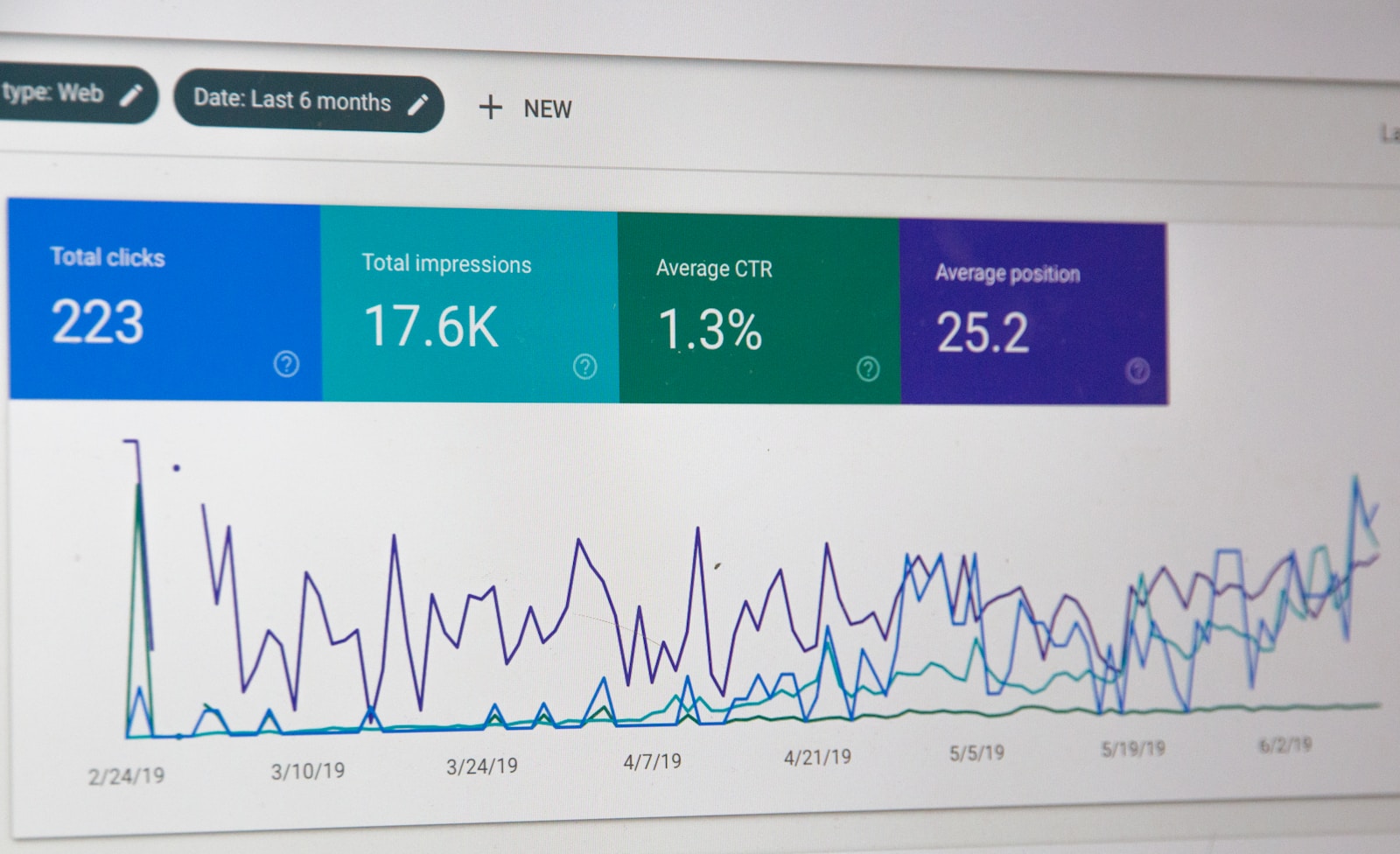Introduction to SEO
Search Engine Optimization (SEO) is a crucial component of digital marketing that focuses on enhancing a website’s visibility in search engine results pages (SERPs). In an increasingly digital world, where consumers turn to search engines as their primary source of information, understanding SEO is vital for anyone looking to establish an online presence. At its core, SEO involves a series of best practices aimed at increasing both the quantity and quality of organic traffic to a website.
To grasp the importance of SEO, one must first understand how search engines operate. Search engines work by crawling the web, indexing pages, and ranking them based on a variety of factors, including relevance and authority. When a user enters a query, search engines utilize complex algorithms to deliver the most pertinent results. This means that websites with optimized content are more likely to appear at the top of the search results, thereby attracting more visitors.
The significance of SEO cannot be understated, especially given the competitive nature of the online marketplace. A well-executed SEO strategy can help businesses and individuals achieve greater visibility, resulting in increased brand awareness and potentially higher conversion rates. By optimizing website content, metadata, and user experience, one can effectively improve the site’s standing in SERPs.
Moreover, mastering SEO offers numerous benefits beyond mere visibility. It fosters a better understanding of target audiences, enabling content creators to tailor their offerings to meet user needs. Additionally, investing in SEO is a cost-effective strategy compared to traditional advertising methods, as it focuses on attracting users who are actively seeking relevant content. In conclusion, for beginners embarking on their digital marketing journey, a solid understanding of SEO is essential for achieving long-term success and establishing a robust online brand.
Understanding Keywords
Keywords are fundamental elements in search engine optimization (SEO) that directly influence the visibility of web content. They serve as the bridge between what users are searching for and the content that websites provide. Therefore, understanding keywords is vital for anyone beginning their journey in SEO. To effectively optimize content, one must first conduct thorough keyword research, which involves identifying relevant terms that potential visitors might use to find information related to a specific niche.
Beginners can utilize various tools to facilitate keyword research. Free options like Google Keyword Planner and Ubersuggest allow users to explore keyword ideas, search volumes, and trends. These platforms enable one to analyze competitive keywords and discover long-tail variations, which often comprise three or more words. Long-tail keywords are essential, as they typically attract more targeted traffic, leading to higher conversion rates. Moreover, these phrases are less competitive, making it easier for beginners to rank in search results.
It is equally important to understand keyword intent, which refers to the purpose behind a user’s search. Broadly classified into informational, navigational, and transactional intents, recognizing the intent of a keyword helps in crafting content that meets user expectations. Creating content that addresses these intents will improve user engagement and enhance SEO efforts. Once relevant keywords are identified, the next step is to integrate them naturally into the content. This includes placing keywords in titles, headings, and throughout the text, ensuring that they fit seamlessly into the narrative without disrupting readability. Overusing keywords, often referred to as keyword stuffing, should be avoided as it can lead to a poor user experience and even penalties from search engines.
On-Page SEO Techniques
On-page SEO refers to the techniques used to optimize individual web pages to rank higher and earn more relevant traffic in search engines. For beginners, understanding the fundamental aspects of on-page SEO is crucial. An essential starting point is the implementation of title tags, which should accurately reflect the content of the page while incorporating the primary keywords. Ideally, a title tag should be between 50-60 characters to ensure that it displays properly in search engine results.
Equally important is the meta description, which serves as a brief summary of what the page entails. A compelling meta description can significantly improve click-through rates. It should be concise, ideally 150-160 characters, and should also include relevant keywords. This helps search engines comprehend the subject matter of the page and, in turn, enhances its visibility.
Header tags, specifically the H1, H2, and H3 tags, are also crucial elements of on-page SEO. The H1 tag usually contains the main title of the page and should feature the primary keyword. Subsequent headers can be used to break down the content, making it easier for both users and search engines to navigate and understand the information presented. Properly structured headers not only contribute to a better user experience but also assist in ranking for various relevant queries.
Another often-overlooked aspect is the use of image alt texts, which help search engines to interpret the content of images. Alt texts should be descriptive and relevant to the images they accompany, incorporating appropriate keywords when possible. This not only enhances SEO but also improves accessibility for users with visual impairments.
In summary, a practical checklist for on-page SEO may include: strong title tags, compelling meta descriptions, properly structured header tags, and descriptive image alt texts. By focusing on these elements, beginners can lay a solid foundation for effective search engine optimization on their web pages.
Creating High-Quality Content
High-quality content serves as a cornerstone of effective search engine optimization (SEO). It not only enhances visibility on search engines but also provides value to users. Quality content is characterized by its originality, relevance, and ability to engage the audience. This makes it essential for those looking to improve their SEO strategy, particularly beginners who are navigating the complexities of online visibility.
To create high-quality content, it is critical to understand your target audience. Conducting thorough research will help identify their needs, interests, and pain points. By addressing these aspects, you can ensure that your content is both informative and relevant. Furthermore, originality cannot be overstated. Unique content not only builds your credibility but also encourages user engagement, which is vital for improving your SEO performance.
Structuring content for readability should also be a priority. Use clear headings, subheadings, and bullet points to break up large blocks of text. This segmentation makes it easier for users to scan the information quickly. Additionally, ensure that content flows logically. Cohesion across paragraphs allows readers to grasp the overall message efficiently. Enhancing your content with relevant multimedia elements such as images, videos, or infographics can significantly boost engagement. These elements not only illustrate your points visually but also make the content more appealing and digestible.
Moreover, incorporating internal and external links can further elevate the quality of your content. Internal links guide users to additional relevant information on your site, thereby keeping them engaged longer. On the other hand, external links to authoritative sources lend credibility and provide your audience with further resources. Ultimately, creating high-quality content is an ongoing process that evolves with user expectations and search engine algorithms, making it essential for sustained SEO success.
Technical SEO Basics
Technical SEO refers to the process of optimizing a website’s infrastructure to ensure that search engines can crawl and index it effectively. This aspect of search engine optimization is foundational, as it directly impacts how well a website performs in search engine results pages (SERPs). One of the critical components of technical SEO is website speed. Research indicates that faster loading times not only improve user experience but also enhance search rankings. Therefore, optimizing images, leveraging browser caching, and minimizing JavaScript can significantly reduce page load times.
Another essential element of technical SEO is mobile optimization. With a growing number of users accessing websites through mobile devices, Google prioritizes mobile-friendly sites in its indexing process. This shift has led to the implementation of responsive design, ensuring that web pages adapt seamlessly to any screen size. Websites that fail to accommodate mobile users may experience high bounce rates and a corresponding drop in search rankings.
Additionally, XML sitemaps and robots.txt files play a vital role in technical SEO. An XML sitemap acts as a roadmap for search engines, listing all the important pages on a site to facilitate efficient crawling. On the other hand, a robots.txt file provides directives that guide search engine bots about which parts of a site should or should not be crawled. Improper use of these tools can lead to issues with indexing, undermining SEO efforts.
To effectively implement technical SEO, beginners should consider conducting a technical SEO audit. This involves assessing website speed, mobile compatibility, and the proper configuration of XML sitemaps and robots.txt files. Addressing common technical issues such as broken links or server errors will enhance a site’s overall performance and visibility in search engine results. Through careful optimization of these technical elements, a solid foundation can be established for effective SEO practices moving forward.
Link Building Strategies
Link building is a fundamental aspect of search engine optimization (SEO) that involves acquiring hyperlinks from other websites to your own. These backlinks serve both as a vote of confidence from one site to another and as a crucial factor in determining a website’s authority and ranking in search engine results pages (SERPs). Well-executed link-building strategies can significantly influence the visibility of your site, contributing to increased traffic and credibility.
One effective approach to link building is guest blogging. By creating high-quality content for other reputable blogs within your niche, you can earn backlinks while simultaneously enhancing your brand’s exposure. When selecting blogs to contribute to, ensure that they have a good domain authority and a relevant audience that aligns with your target market. This reciprocal relationship not only bolsters your link profile but also fosters community engagement and collaboration.
Another important strategy is outreach. This involves directly reaching out to website owners, bloggers, or industry influencers, proposing content collaborations, or requesting them to link to your resources. A personalized email explaining the mutual benefits of a potential partnership can yield fruitful results. Moreover, leveraging social media platforms to share your original content increases its likelihood of being seen and linked by others in your field.
However, it is essential to avoid black-hat link-building techniques, which include buying links, excessive link exchanges, or using automated tools to spam links across numerous sites. These tactics can lead to severe penalties from search engines, damaging your site’s reputation and rankings. Instead, focus on ethical link-building practices that prioritize quality over quantity, ensuring that each acquired link contributes positively to your site’s authority.
Utilizing Local SEO
For businesses that rely on foot traffic or cater to a specific geographical area, local SEO is an essential component of their marketing strategy. Local SEO is designed to optimize online presence and visibility in local search results, making it easier for potential customers in the vicinity to find relevant products and services. One effective way to harness local SEO is through the optimization of Google My Business (GMB) profiles. By claiming and verifying a GMB listing, businesses can provide crucial information such as their address, phone number, business hours, and images, all of which enhance visibility on Google search and maps.
In addition to maintaining an updated GMB profile, leveraging local keywords can significantly impact search rankings. Businesses should conduct thorough keyword research to identify terms that potential customers are using in their search queries. Incorporating these local keywords into website content, meta tags, and descriptions can help improve organic search rankings, thereby driving more local traffic. Furthermore, integrating city or regional names into content strategies enables businesses to appeal directly to local audiences, enhancing engagement and conversion rates.
Collecting and showcasing local reviews is another crucial strategy for boosting local SEO. Positive reviews not only enhance credibility but also improve rankings in local search results. Encouraging satisfied customers to leave reviews on platforms such as Google, Yelp, or Facebook can assist in attracting new customers, as prospective consumers often look for social proof before making decisions. Finally, creating localized content, such as blog posts about local events, news, or community highlights, can further strengthen a business’s online presence. By focusing on local SEO strategies, businesses can effectively improve their visibility and connect with their target audience in their respective locales.
Measuring SEO Success
Measuring the success of your SEO efforts is vital for understanding the effectiveness of your strategies and guiding future optimization. Several key performance indicators (KPIs) can provide insightful metrics on your site’s performance in search engines and its overall impact on business goals.
One of the most crucial KPIs to monitor is organic traffic, which refers to the number of visitors arriving at your site through search engine results. A consistent increase in organic traffic typically indicates that your SEO strategies are effectively improving your website’s visibility and relevance. Tools like Google Analytics can help you track these metrics, providing detailed reports on user behavior and traffic sources.
Another important KPI to consider is the bounce rate, which measures the percentage of visitors who leave your site after viewing only one page. A high bounce rate may suggest that your content is not engaging or relevant to your target audience, signaling a need for content improvements or better-targeted keywords. Monitoring this KPI helps you assess the quality and effectiveness of your site’s content.
Conversions also serve as a significant metric for SEO success. A conversion can be defined as any action you want users to take, such as filling out a form, signing up for a newsletter, or making a purchase. By measuring conversions, you gain insights into how well your SEO efforts are driving valuable actions on your site. Google Analytics allows you to set up conversion tracking to gain a clearer picture of this performance.
Additionally, Google Search Console is an excellent tool for overseeing your site’s presence in search results. It offers insights into indexing status, search queries, and click-through rates (CTR). By regularly analyzing these metrics, beginners can make informed adjustments to their SEO strategies. In conclusion, systematically measuring these KPIs will provide you with a comprehensive view of your SEO success and areas for potential improvement.
Staying Updated with SEO Trends
In the dynamic world of digital marketing, staying updated with the latest SEO trends is crucial for beginners aiming to enhance their online presence. Search engine optimization is constantly evolving, driven by algorithm updates and shifts in user behavior. Consequently, it is essential for practitioners to be informed about these trends to maintain their effectiveness and competitiveness.
One of the most effective ways to keep abreast of SEO developments is by following reputable blogs and websites dedicated to the field. Prominent resources such as Search Engine Journal, Moz, and Search Engine Land provide valuable insights, news, and practical tips on the latest SEO strategies and updates. Subscribing to their newsletters can ensure that you receive timely information directly in your inbox.
Podcasts have also gained popularity among SEO enthusiasts. They offer a convenient way to consume information while multitasking. Channels like Marketing School or The SEO Podcast delve into current SEO topics and feature discussions with industry experts, making them an excellent educational resource.
Engagement in forums and social media groups that focus on SEO can further enhance your knowledge. Platforms like Reddit and Facebook have communities where professionals share their experiences and advice on adapting to new trends. Participating in these discussions allows beginners to ask questions and gain practical insights from seasoned practitioners, fostering a collaborative learning environment.
Lastly, as algorithm changes occur, adapting your strategies is essential. Regularly assessing the effectiveness of your SEO techniques and being willing to pivot based on new findings will significantly enhance your skills. Embracing a mindset of continuous learning is vital in the ever-changing landscape of SEO, where adaptability is key to success.




